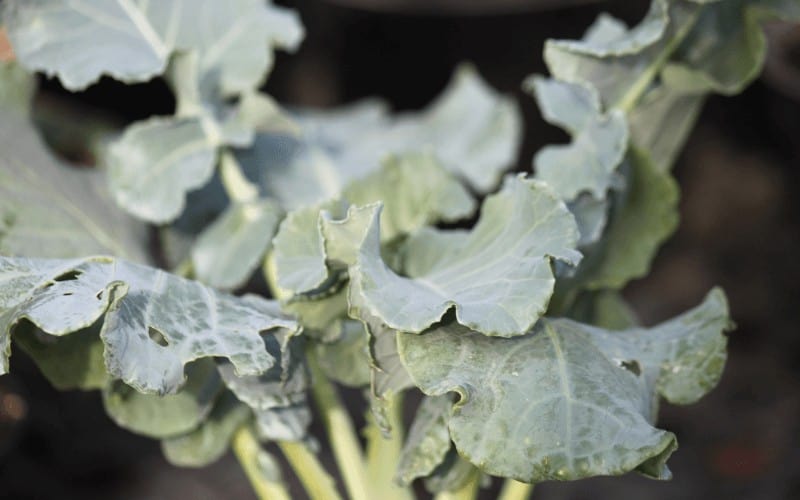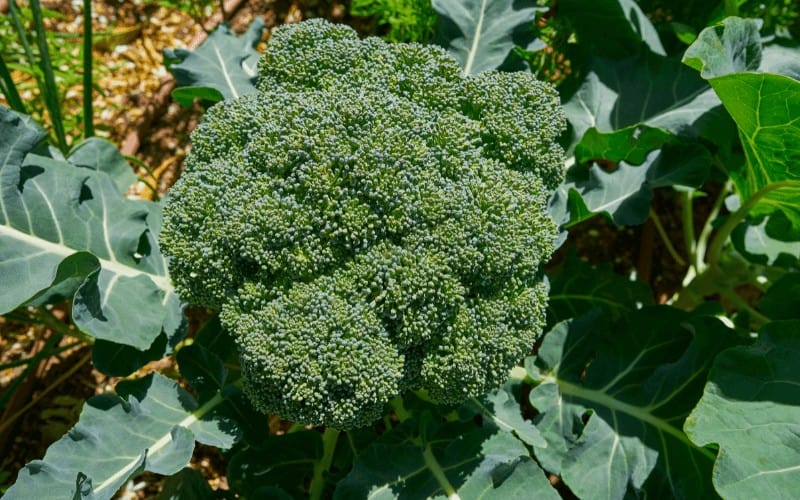If you have ever wondered whether you can grow broccoli from scraps, this is the answer for you. In this guide, you're going to learn how to grow broccoli from scraps the right way.
Broccoli is one of the hardy vegetables belonging to the brassica family. It is a sun-loving, cool-season crop that grows well in cooler temperatures.
This health-beneficial plant is rich in vitamins and highly nutritious, hence its name "crown jewel of nutrition." Although broccoli takes a longer time to mature, it yields the patient grower a crown of harvest in the long run.
Now, let's look at how broccoli can be grown from scraps!
Table of Contents
Can You Grow Broccoli from Scraps?
Yes! Leftovers end in the trash can, but that is not the same for plants, especially broccoli.
Growing broccoli from scraps would make just about anybody with or 'without' experience a successful gardener! And proud vegetable owner!
With the right guide, a little bit of do's and 'don'ts' will protect your plant as well as keep you and your broccoli smiling.
Should Broccoli be Grown Indoor or Outdoor?
Broccoli is not choosy. So, it will work well for both indoor and outdoor planting.
To grow broccoli indoor- pick a sunny location. If you have a greenhouse; great! Let your broccoli face south, so it gets lots of direct sunlight. Plant it in large pots if you intend to grow it indoors for a long time.
To grow broccoli outdoor- sow between March and June, this is because even as it prefers cool temperatures, broccoli frowns at frost or freezing temperatures. Also, sow broccoli two weeks before the last frost.
Now that you know you can plant broccoli both indoor and outdoor, let's quickly look at how to grow broccoli from scraps.
How to Grow Broccoli From Scraps

You probably have your broccoli right at home, or you intend to buy to explore other varieties. Whatever the case may be, read on to achieve awesome results.
First things first,
Step 1: Prepare your broccoli
So many things must come into place during this process.
Choose the right variety of broccoli: There are always great varieties to choose from; the easiest of them all is calabrese broccoli. And, it would be best if you had the broccoli that best suits your climate condition.
Cut your stall for best results: Use stems that are at least 5-inches long, preferably the one with a long central stem. It will produce strong roots.
Now that you have a cut stem, rinse your broccoli stem thoroughly to remove dirt and debris, then cut the head on the branches.
Step 2: Leave the Stem in Water
Get a tall, transparent clean container. Fill it with water, and the container should be at least 6-inches tall, depending on the height and size of your broccoli. The container should be tall enough to hold the stem.
Pour it in clean water and submerge the lower part of the stem. The other part above should be left open.
Place your container at the window to receive sunlight for a week; by now, you should notice new roots sprouting and multiplying from the base of the stem.
Ensure to check the stem regularly, so the top doesn't dry; water the top with a spray bottle. This is to keep the whole stem moistened.
More so, change the water once you notice dirt to encourage more root growth. At this point, you will see some signs, such as:
- Thick stems
- Elongated roots
- And the roots will become darker
Your broccoli plant is now ready to move to the soil.
Note: Avoid waiting too long to plant. If the root tips get too long or dark, your stem won't transplant.
Step 3: Find and prepare your planting location
Before you plant your broccoli in the soil, prepare your location, the best rule of thumb is to make sure there's no risk of frost. It would be best if you planted your broccoli in a good location.
Though broccoli is a cool-weather plant, it is no friend with freezing temperatures. Therefore, make sure your environment is' free' from frost danger.
The commonplace to plant broccoli is in the ground because it grows into a large plant when it matures.
However, you can grow your broccoli in a container so long as it is large. A 5-gallon bucket is a good idea.
Step 4: Get a good soil and prepare a potting mix
Use fertile soil. The ideal soil for planting broccoli is mildly acidic. The soil pH level should be between 6.1 and 6.8.
You can improve the soil texture to provide the soil with nutrients. To improve the soil texture, use compost, apply mulch, or use well-rotted manure.
When potting, get a well-draining pot, mix your organic into your pot.
Does Broccoli Need Fertilizer?
Yes, you can fertilize your broccoli to enhance growth. Broccoli is a heavy feeder. So, you can use an organic fertilizer that is low in nitrogen, such as compost manure. Feed your plant every three weeks.
Step 5: Planting Your Broccoli
Now you are ready to plant!
Carefully remove the rooted stem from the water, don't damage the roots. Plant the stem deep into the soil, avoid covering all the roots. To keep the soil cool, surround the stem with mulch.
If you are planting in the garden and quantity, leave enough space for your broccoli to grow well.
How much Space Does Broccoli Need to Grow?
Broccoli will need as much as 12-24 inches of space away from the other.
This is because broccoli grows upright. It will often reach the height of 2½ feet. They will also become large plants when they mature and will require all the space.
How to Care For the Broccoli After Planting

Your broccoli plant sure needs all the care it can get to grow into a nutritious plant. Here are a few must do to get it growing.
Step 6: Watering
Now that you are done planting, water the garden soil gently with water. This is to keep the soil and your broccoli moist.
The moist will enhance the germination process. Avoid overwatering or flooding your broccoli plant.
Does Broccoli like lots of water? Broccoli likes consistent moisture to grow rapidly and produce a good head, and you need to water consistently, not constantly.
The key is to keep it moist. Apply 1 to 1.5-inches of water every week. Use mulch to control the watering process.
Step 7: Sun exposure and temperature
Broccoli thrives outdoors in 65°F to 70°F conditions. It needs good exposure to sunlight to sustain its growth.
Your plant will bloom if it gets at least 6 hours of direct sunlight. Remember, it is a cool-season crop and will do well in cool temperatures.
Note: Broccoli that matures during cool weather produces a healthy head that tastes sweeter.
Step 8: Pests’ control
As humans enjoy broccoli, so do pests. So, watch out for common broccoli pests; cabbage worms, aphids, flea beetles, cutworms, and powdery mildew.
To treat them: rotate crops, use insecticides and fungicides, but make sure it is less toxic, so it doesn't affect your plant.
Conclusion
Growing broccoli from scraps should be a fun process with this easy-to-use guide. And now that you have mastered the process, save those scraps you intend to do away with and become a great gardener.
Not only will you eat from your plant, but you can also equally make a good income with it. Always refer back to this guide and ensure you are patient with your plant.
This is all there is to know on how to grow broccoli from scraps.
Best rest assured of a successful experience growing your broccoli from scraps!
You may also want to read:
- How to Grow Zucchini from Scraps
- How to Grow Sage from Cuttings
- Can You Grow Rutabaga From Scraps?
- Can You Grow Onion From Scraps?
- Can Cauliflower Be Grown From Scraps?




